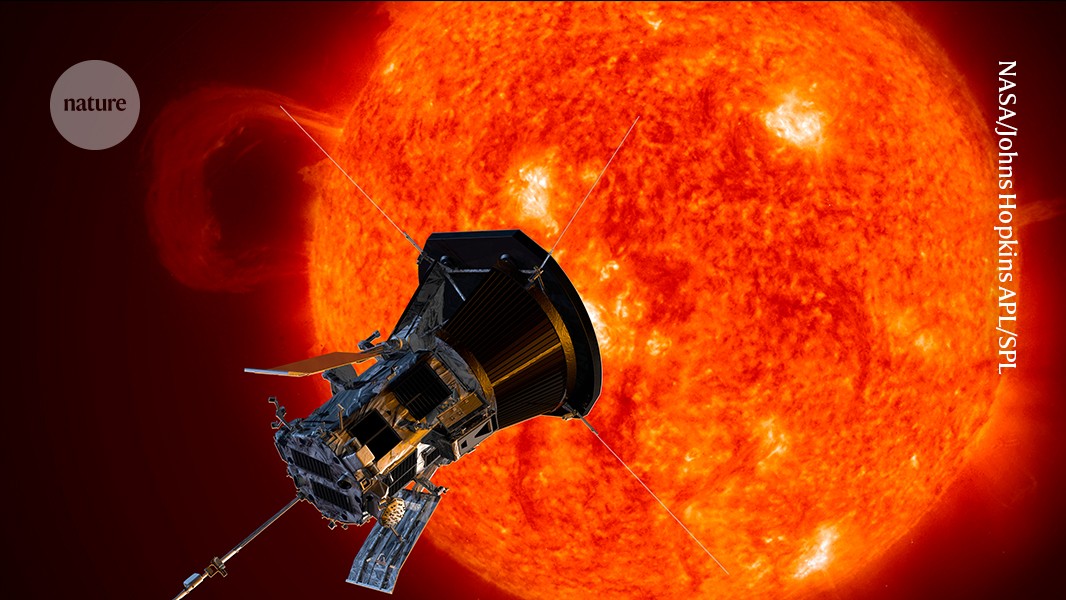Spacecraft makes closest-ever fly-by of Sun: what the trip will tell us

NASA’s Parker Solar Probe could solve the mysteries of the solar wind and test Einstein’s theory of relativity
On 24 December, NASA’s Parker Solar Probe whizzed through the Sun’s atmosphere, diving closer to our star than any spacecraft ever has. It survived the fiery passage, and on 1 January it reported back to Earth that its scientific instruments had successfully collected data during the journey.
That information should reach Earth in the next few weeks — marking a sunny start to 2025 for solar physicists, who have been waiting for the data since the mission launched six years ago. Among other things, they hope to learn more about the origin of the solar wind, the stream of energized particles that floods outwards from the Sun, and how the Sun’s outer atmosphere, or corona, is heated to millions of degrees — even hotter than the solar surface.
“Parker Solar Probe is opening our eyes on a new reality about our star,” says Nour Rawafi, an astrophysicist at the Johns Hopkins University Applied Physics Laboratory (APL) in Laurel, Maryland, and the mission’s project scientist.
Feel the heat
Since its launch, the spacecraft has been looping around the Sun, getting progressively closer. In 2018, it measured part of the solar wind streaming from a small hole in the corona. Three years later, it dipped into the corona for the first time.
The fly-by on 24 December was its 22nd pass of the Sun, and its closest. The probe passed around 6.1 million kilometres from the solar surface, probably experiencing temperatures around 980 °C.
But it’s designed to withstand even hotter conditions. “We knew that this was a very harsh environment,” says Elizabeth Congdon, an engineer at the APL who oversaw development of the probe’s heat shield. “So we over-designed the system.” Researchers have observed that the white protective coating on the heat shield, made of carbon composite and carbon foam, seems to be getting whiter each time it is blasted by solar radiation during a fly-by. That means it is getting even better at reflecting away the Sun’s heat.
Although scientists can study the solar wind and corona from afar using more-distant spacecraft and solar telescopes on Earth, the Parker Solar Probe is the only instrument that can make observations where these solar phenomena are born, Rawafi says. For instance, in 2023, scientists confirmed the existence of a relatively dust-free region of space around the Sun using data from the probe1. This region had long been predicted but had never before been observed, because no spacecraft had actually visited the region.
Enjoying our latest content?
Login or create an account to continue
- Access the most recent journalism from Nature's award-winning team
- Explore the latest features & opinion covering groundbreaking research
or
Sign in or create an account Continue with Google
Continue with Google
doi: https://doi.org/10.1038/d41586-025-00009-2
This story originally appeared on: Nature - Author:Alexandra Witze


















